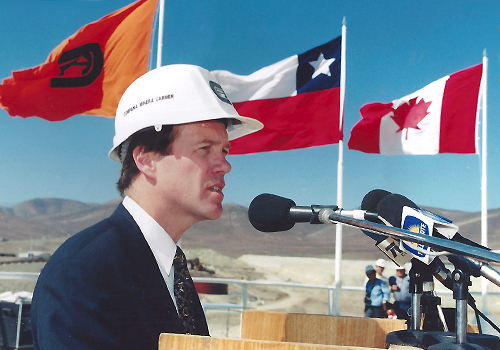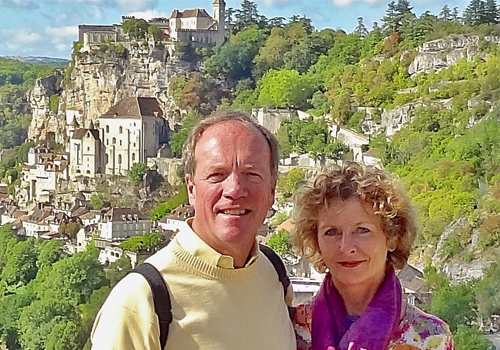Though the University of Toronto represents a brief period in alumnus David Brace’s life — and close to 50 years ago, at that — it left a lasting impression on him.
“I left Toronto a few days after I graduated, going to the Arctic, British Columbia, Chile, and only came back here to Toronto about 15 years ago,” says Brace, who earned his bachelor of science in geology in 1975 as a member of New College.
Once back, though, he immediately reconnected with his alma mater, sharing his knowledge and becoming a member of the Earth Science Industry Steering Committee in 2013. He has regularly attended department events over the years and contributed to the Emeritus University Professor A. J. (Tony) Naldrett Graduate Scholarship.
In December 2021, he and his wife Louise created the David and Louise Brace Undergraduate Award in hopes of supporting students in need and ultimately helping drive the next geological discoveries in Canada and beyond.
“We created this award to provide financial assistance to people who would like to study earth sciences — specifically undergrads — and especially ones that may have challenges with their finances,” he says.

This type of award is very important in creating a more inclusive field and helps ensure talented students aren’t prevented from reaching their education goals.
“As students move through their degree programs, they often juggle competing demands on their time and their finances,” explains Sarah Finkelstein, chair of the Department of Earth Sciences. “Undergraduate scholarships such as this new scholarship endowed by David and Louise Brace alleviate some of that pressure and allow students to focus on their studies. Further, this award shows our students the support they have from alumni and friends of the department, helping to uphold the strong sense of community in U of T’s Department of Earth Sciences.”
For Brace, leaving Toronto was always part of the plan. Travel was a big draw to a career in mining.
“I wanted to travel, and I didn't want to work in an office, necessarily. I wanted to be able to work outside. That was good enough for me — and it worked out for me,” he says.
His first stop after graduation was the Yukon, where he’d spent the previous summer searching for porphyry copper and sedimentary copper deposits for Inco Limited. He continued with that firm, exploring in the Yukon and Northwest Territories, before becoming a mining geologist at Terra Mining’s high-grade silver mine on Great Bear Lake, where he stayed until 1978. From 1978 to 1980, he was chief geologist at the Northair gold mine in Whistler, B.C.
“During that time, I met my wife-to-be Louise at a ski party in Whistler and we were married in 1980. We have raised three wonderful children and now have five grandchildren, all of whom provide us with a busy and fulfilling family life,” he says.
He then served as a financial analyst at Cominco, primarily on the formation of the Highland Valley Copper partnership, which developed the Highland Valley Copper Mine, Canada’s largest copper mine. At the same time, he earned his master of business administration at the University of British Columbia in 1985.

His career eventually took him and his family to Chile, where he became president of the South American Division of Aur Resources. In this role, he oversaw the Carmen de Andacollo and Quebrada Blanca mines, which produced a combined 100,000 tons of cathode copper per year.
He was also CEO of GlobeStar Mining Corporation from 2008 to 2010, and CEO and director of Karmin Exploration until 2019. He continues to act as president and director for a number of organizations, including Lambton Capital Inc. and Largo Resources.
Now back in Toronto and reconnected with U of T and its students, he says he’s impressed by what he sees.
“I'm always amazed, to be quite honest, by what is being studied these days, because much of it didn't exist in the 1970s,” he says. “That just shows how far the earth sciences have moved in the last 40 or 50 years, and it's fascinating.”

